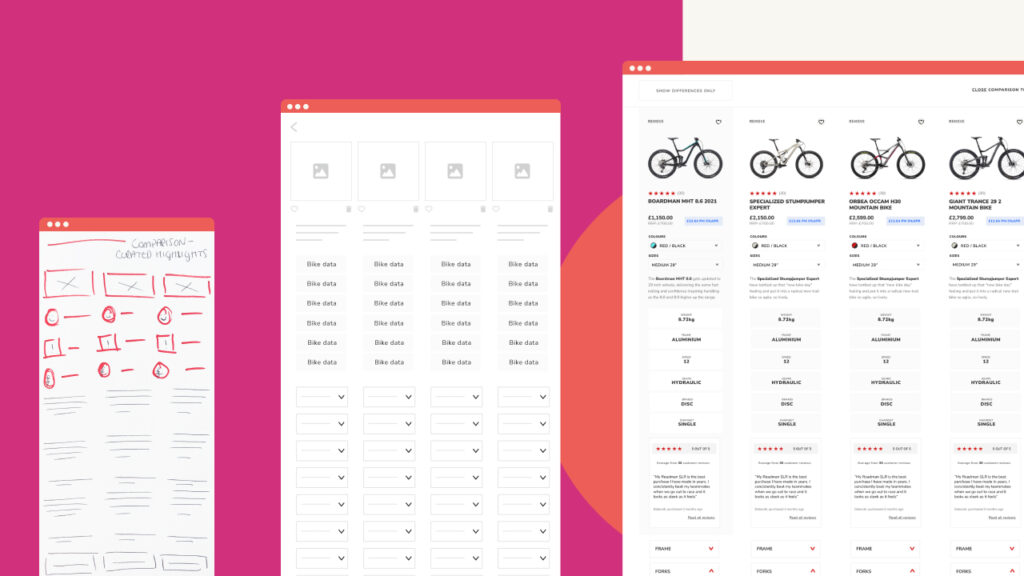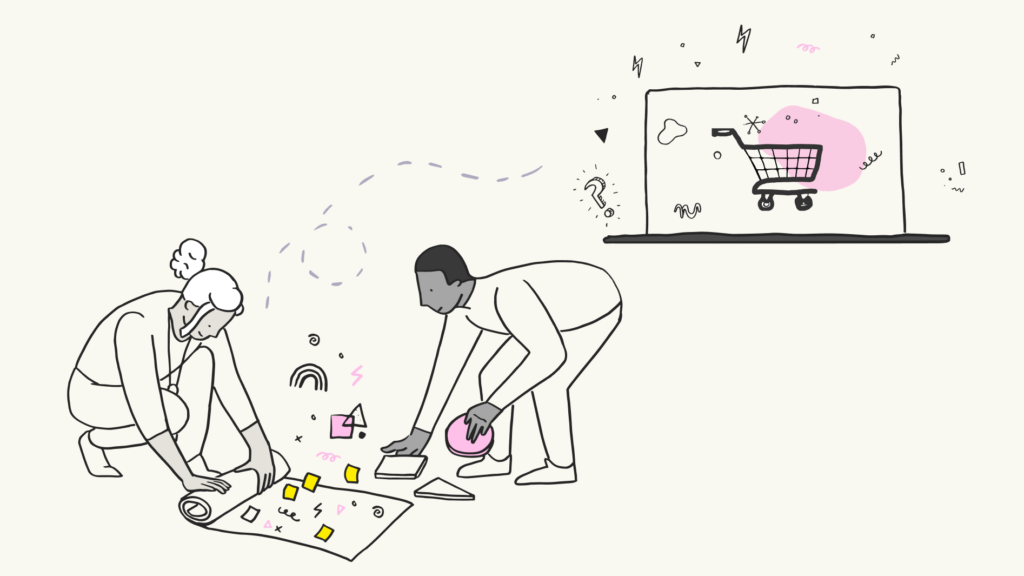Metaphors are used in human-computer interaction to describe unfamiliar concepts or systems, like a computer, in terms of familiar elements, like files and folders. In the realm of e-commerce, many retailers employ aspects of physical stores to describe the user’s interaction. One popular metaphor is the “shopping cart” – a space for users to store items for later purchase. “Shopping cart” is only one of many terms used to describe this feature, along with bags, baskets, selections, orders and lists… even the top online retailers have not come near to a universal standard. How does the terminology we use reflect the metaphor we’ve chosen? How appropriate is the metaphor to the user’s task? And is it appropriate to use a metaphor at all?
Staying true to the metaphor
The purpose of the metaphor is to draw upon concepts already familiar to the user to help them interact with an abstract system. Straying too far from the properties of that familiar concept may risk reducing usefulness of the metaphor. A number of top online retailers use the term “bag” instead of “cart”. If we are truly trying to reflect the user’s “real life” shopping experience in the online store, “bag” is perhaps a little ill-fitting. The purpose of a basket or cart or trolley is that it is what you carry around the store before you buy. A bag, however, is usually where items go once you have bought them, after the checkout process. We can take this further still by examining the physical properties of the items we are using. In a physical store, we’d select a trolley rather than a basket to hold more items; does the term “trolley” therefore encourage the user to buy more? Given the significant profitability of even a low percentage of users adding an extra item to their order, it could be worth investigating through further usability research.
What does your metaphor imply about the task?
Something to consider when choosing the shopping cart terminology – or when considering any metaphor – is what implications the metaphor has to the user’s task. In using the metaphor, we aim to tap into a user’s pre-existing mental map, but since the mind is rather complex, the user may draw links that go beyond the scope we had initially anticipated. An example from the shopping cart terminology is the level of commitment to purchase the user gives, at the point where they add an item into their cart. This idea has been discussed in the usability community regarding the labelling of action buttons on e-commerce websites. Some argue that, rather than “BUY NOW”, the action button should be labelled “add to cart”. Usability testing suggests that users – particularly those who are relatively unfamiliar with online shopping – are put off by the “buy” option, since they are not necessarily ready to buy at this stage, and may wish to continue browsing (Chaparro, 2002). It is unclear whether pressing a “buy” button will add the item to the cart, or take the user straight to the checkout. If it is the former, then the terminology is inconsistent with the metaphor. The same could apply to the terminology we use for the cart. Some websites, such as top UK retailer B&Q, use a “shopping list” rather than a cart, which implies a low level of commitment to purchase from the user. A great strength of this must be that users feel absolutely free to add items to it. However, it may cause some confusion; is the user creating a wishlist for future reference, or are they selecting items to purchase? In this case, terms such as cart and basket provide greater clarity, with the term accurately reflecting the intended action.
Does the metaphor apply to your specific audience?
An important aspect to consider is whether the metaphor employed is culturally relevant to the audience. Some usability experts have suggested that e-commerce sites should always use the term “cart”, since it matches users’ expectations and is the most standard term (Chaparro, 2002). This may apply to US websites, but does not work as well in other countries. The term “cart” is not normally used in the UK, and therefore it loses the primary reason it was selected in the first place – to use terminology and concepts already familiar to the user.
Should we use a metaphor at all?
With an increasing mass of negative research surrounding the misuse of metaphors (see Nielsen, 2000, for an example), a web designer would be forgiven for wanting to abandon their use altogether. However, the use of a shopping cart in itself is an essential element in the online shopping experience; we can’t abandon the functionality and we do have to stick with something the user will understand. We therefore have to choose the term that best fits the site and its audience, and there are clearly a number of variables to consider. Ultimately, a well-chosen metaphor can significantly enhance users’ interaction with websites (if the sales of early personal computers exploiting the desktop metaphor are not enough to convince you, read the referenced study by Smilowitz, 1996). But the debated terminology of the shopping cart just highlights the fundamental flaw of metaphors in interfaces: that designers are too often making the interaction fit the metaphor. To make a metaphor work we shouldn’t be asking “what does our metaphor encourage users to do?”, but rather “what do our users want to do?” – and use a metaphor only if it fits. We need to remember the reason we applied the metaphor originally: to make the website easier to use.
References:
Chaparro, B. (2002). Top Ten Mistakes of Shopping Cart Design. Usability News, [Online]. Vol 4 (2). Nielsen, J. (2000). Designing Web Usability, New Riders Publishing. Smilowitz, E. (1996). Do Metaphors make web browsers easier to use?, Proceedings of Designing for the web: empirical studies. Microsoft Conference, 1996. Top UK online retailers retrieved from the IMRG-Hitwise Hot Shops List, available at http://www.netimperative.com/news/2008/february/12/top-50-online-retailers-in-the-uk [accessed 26/05/08].
—
UX design can be a real differentiator for your products and services, let us help you to set yourself apart from your competition. We have a proven track record of improving the design of e-commerce websites and improving our client’s revenue levels.
If you would like Nomensa to help you with your user experience challenges or to provide you with a UX evaluation of your website/mobile app, please don’t hesitate to get in touch.
Take a look at the UX Design services that we offer.
We drive commercial value for our clients by creating experiences that engage and delight the people they touch.
Email us:
hello@nomensa.com
Call us:
+44 (0) 117 929 7333




